
Jun 21, 2024 | DIY Pest Control, Wildlife
If you live in Georgia, you know that the state’s warm climate and diverse ecosystems are home to a variety of wildlife, including snakes. Encountering a snake in your yard or home can be unsettling, but knowing how to handle the situation safely is crucial. This guide will provide you with essential information on what to do if you come across a snake, how to identify venomous and nonvenomous snakes in Georgia, how to practice safe snake removal, and prevent snakes from entering your property.
What to Do If You Encounter a Snake
Outdoors:
- Stay Calm and Keep Your Distance: If you see a snake outdoors, remain calm. Most snakes are non-aggressive and will avoid humans if given the chance.
- Observe from a Safe Distance: Do not try to touch or provoke the snake. Take a few steps back and give it space to move away.
- Identify the Snake: Use binoculars or a zoom lens to get a closer look without getting too close. This can help in identifying whether the snake is venomous or nonvenomous.
Indoors:
- Do Not Panic: If you find a snake inside your home, do not panic. Most indoor encounters are with nonvenomous snakes.
- Contain the Snake: If possible, isolate the snake in a room by closing the door and placing a towel at the bottom to prevent it from escaping.
- Call a Professional: For safe snake removal, contact a wildlife control company. Search for “snake removal near me” to find local professionals who can handle the situation.
Identifying Venomous vs. Nonvenomous Snakes in Georgia
Georgia is home to both venomous and nonvenomous snakes. Here are key identifiers:
Venomous Snakes:
- Eastern Diamondback Rattlesnake: Large, heavy-bodied with diamond-shaped patterns and a rattle on the tail.
- Copperhead: Distinctive hourglass-shaped bands across the body.
- Cottonmouth (Water Moccasin): Thick body, dark crossbands, and a distinctively white mouth.
- Coral Snake: Brightly colored with red, yellow, and black bands. Remember the rhyme: “Red touches yellow, kills a fellow; red touches black, friend of Jack.”
Nonvenomous Snakes:
- Eastern Garter Snake: Striped pattern running lengthwise down the body.
- Rat Snake: Large and often black or yellow with a checkerboard pattern.
- King Snake: Black with white or yellow bands, often confused with the venomous coral snake.
Safe Snake Removal Methods
- Use a Snake Hook or Tongs: If you have experience, you can use snake hooks or tongs to safely remove a snake. These tools allow you to handle the snake without getting too close.
- Trap the Snake: Place a large bin or bucket over the snake, then gently slide a piece of cardboard underneath to lift and remove it.
- Contact Professionals: For those without experience, it’s best to call a wildlife control company. Professionals have the necessary tools and knowledge to handle snake removal safely.
Preventing Snakes from Entering Your Property
- Eliminate Food Sources: Snakes are attracted to areas with abundant prey. Keep your yard free of rodent populations and secure garbage bins.
- Remove Shelter: Clear away debris, woodpiles, and tall grass where snakes may hide.
- Seal Entry Points: Inspect your home for cracks and gaps. Seal openings around doors, windows, and foundations to prevent snakes from entering.
- Use Snake Repellent: Commercial snake repellents can be effective in deterring snakes from your property. Follow the instructions carefully for the best results.
- Maintain Your Yard: Regularly mow the lawn and trim bushes to reduce hiding spots for snakes.
Who to Call for Snake Removal
If you’re dealing with a snake problem and need professional help, search for “snake removal near me” to find a trusted wildlife control company in your area. These experts can safely and humanely remove snakes from your property and provide advice on preventing future encounters.
Encountering a snake can be a frightening experience, but with the right knowledge and precautions, you can handle the situation safely. Remember to stay calm, keep your distance, and contact professionals for help with snake removal. By taking steps to prevent snakes from entering your property, you can reduce the likelihood of future encounters. Stay vigilant, and don’t hesitate to reach out to wildlife control companies for expert assistance in managing your snake problem.
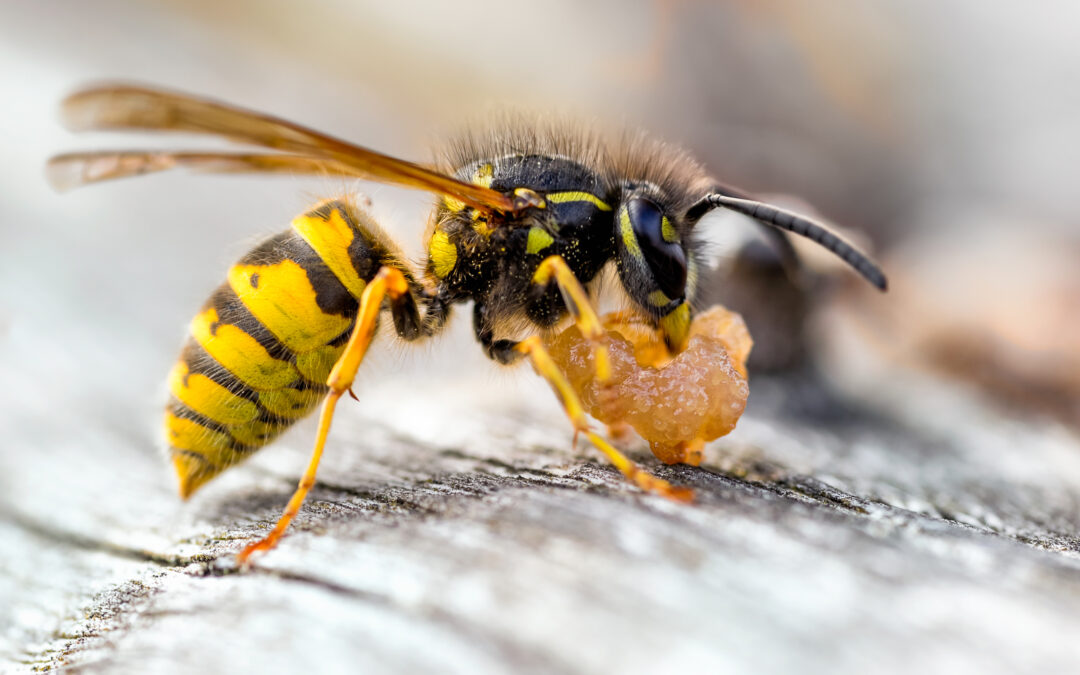
Jun 20, 2024 | DIY Pest Control, Florida Pest Control
Living in Florida can come with great perks – gorgeous beaches, vast landscapes, and a warm, tropical climate to enjoy practically year-round, though this climate also invites some unwelcome guests: stinging pests. From wasps to fire ants, these pests can turn your outdoor fun into worry. In this blog, we breakdown your guide to common stinging pests and how to keep them at bay!
Identify Common Stinging Pests
- Wasps: Wasps, such as paper wasps and yellow jackets, can be aggressive, with their sting being extremely painful. They’ll often build their nests in eaves, attics, and other sheltered areas.
- Bees: While beneficial to the environment, these pests can still become a nuisance if they nest near or inside your home. While honeybees are less aggressive, carpenter bees are known to destroy the structural integrity of structures!
- Fire Ants: These small ants pack a painful sting! Fire ants can be aggressive, and their stings are known to cause severe allergic reactions to some.
Tips to Prevent Stinging Pests
Maintain Your Yard
Keep your lawn trimmed and free of debris. Stinging insects will often nest in overgrown areas throughout your property. Additionally, trim back trees and bushes, and remove piles of leaves or wood. Place any stored lumber 20 feet from your home and raise it off the ground.
Secure Your Trashcans
Wasps and other pests are attracted to food waste, so it’s crucial to dispose of it properly. Make sure your trash bins are sealed tightly and clean them regularly to prevent odors that attract pests. Wasps love the sugary liquids that are left behind in soda cans, so make sure your recycling bins are secure and clean too.
Inspect & Repair
Inspect your home for any openings where pests could enter. Repair screens and doors, and seal gaps around pipes and cables with steel wool or caulk, depending on the size.
Call a Professional
Controlling stinging pests on your own can be very risky and it’s always best to deal with these pests by calling a Naples pest control company near you. These pest control professionals are trained to know how to handle and remove these pests safely.
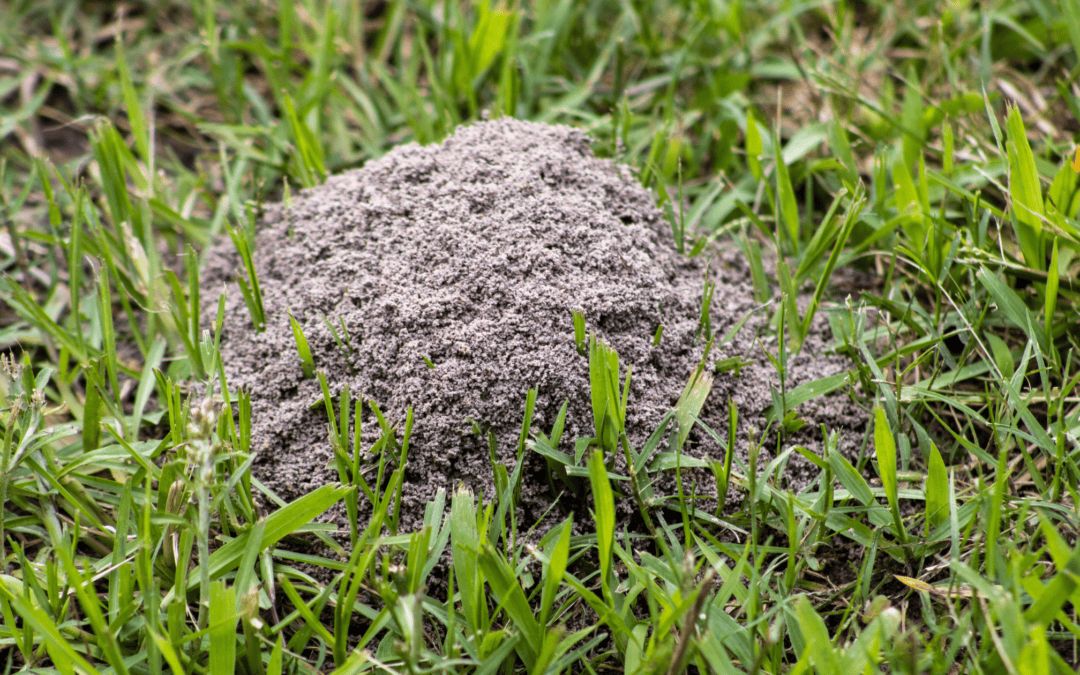
Jun 14, 2024 | DIY Pest Control, Fire Ant
If you live in Georgia, you’re likely familiar with the nuisance of fire ants. These tiny terrors can turn a peaceful yard into a hazardous area, causing pain and discomfort with their bites. Understanding how to identify, control, and prevent fire ants is crucial for maintaining a safe and enjoyable outdoor space. This blog will guide you through the process of detecting fire ants, understanding why they’re harmful, and taking effective measures to control them.
Why Fire Ants are Harmful
Fire ants, particularly the red imported fire ants, are notorious for their painful bites and aggressive behavior. When disturbed, these ants sting multiple times, injecting venom that causes burning pain, itching, and sometimes severe allergic reactions. For individuals with allergies, their bites can be life-threatening and require immediate medical attention.
Beyond their painful stings, these ants pose significant threats to pets, livestock, and wildlife. They can damage crops and invade electrical equipment, causing costly repairs. Thus, managing fire ant infestations is essential not only for personal comfort but also for protecting your property and health.
Where Fire Ants Usually Nest
Fire ants typically nest in sunny, open areas. They prefer well-drained soils and are commonly found in lawns, parks, fields, and pastures. Their nests, or mounds, are usually dome-shaped and can reach up to 18 inches in height. These mounds have no central opening like other ant hills; instead, the ants enter and exit through underground tunnels. In the southeastern United States, including Georgia, these ant mounds are particularly common due to the region’s warm climate.
How to Spot Signs of Fire Ants in Your Yard
Identifying a fire ant infestation early can prevent a small problem from becoming a large one. Here are some telltale signs that you might have them in your yard:
- Presence of Mounds: Look for raised, dome-shaped mounds in sunny, open areas of your yard. These mounds can vary in size but are often about 12 to 18 inches in diameter.
- Ant Trails: Fire ants create well-defined trails leading to and from food sources. You may notice lines of ants traveling between the mound and areas where they forage.
- Aggressive Behavior: These ants are highly aggressive when their nest is disturbed. If you notice ants swarming rapidly and attacking when you come near a mound, you are likely dealing with fire ants.
- Red and Black Coloring: Red imported fire ants are distinctive with their reddish-brown color on the head and body, and a darker abdomen. Observing this coloration can help in identification.
How to Get Rid of Fire Ants
If you’ve confirmed the presence of this type of ants, taking immediate action is crucial. Here are effective methods to get rid of fire ants:
- Bait Treatments: Ant baits are effective as they attract worker ants that carry the poison back to the colony, eventually killing the queen and the entire colony. Place bait around the mounds and in areas where ants are foraging.
- Insecticide Treatments: Liquid or granular insecticides can be applied directly to the mounds. Follow the product instructions carefully to ensure safe and effective use.
- Boiling Water: Pouring boiling water directly onto the mound can kill a significant number of ants. This method may need to be repeated and should be used with caution to avoid injury.
- Professional Pest Control: For large or persistent infestations, contacting a professional pest control company is advisable. Professionals have access to more potent treatments and can implement a comprehensive fire ant control plan.
Fire Ant Prevention Tips
Preventing these aggressive ants from invading your yard is always better than dealing with an existing infestation. Here are some tips to keep them at bay:
- Regular Inspections: Frequently check your yard for new mounds, especially during warm weather when they are most active.
- Yard Maintenance: Keep your lawn well-maintained by regularly mowing the grass and removing debris, which can provide shelter for them.
- Barrier Treatments: Apply insecticide barriers around the perimeter of your property to deter these ants from entering.
- Proper Waste Management: Ensure that garbage is stored in sealed containers and removed regularly to avoid attracting ants.
- Professional Preventive Services: Consider scheduling regular visits from a pest control company to apply preventive treatments and conduct inspections.
Fire ants are a significant pest in Georgia, but with vigilance and proactive measures, you can keep your yard safe. Recognize the signs of fire ants, understand why they’re harmful, and use effective methods to control and prevent infestations. For persistent issues, don’t hesitate to contact a professional pest control company for expert assistance. By staying informed and prepared, you can enjoy a fire ant-free yard all year round.
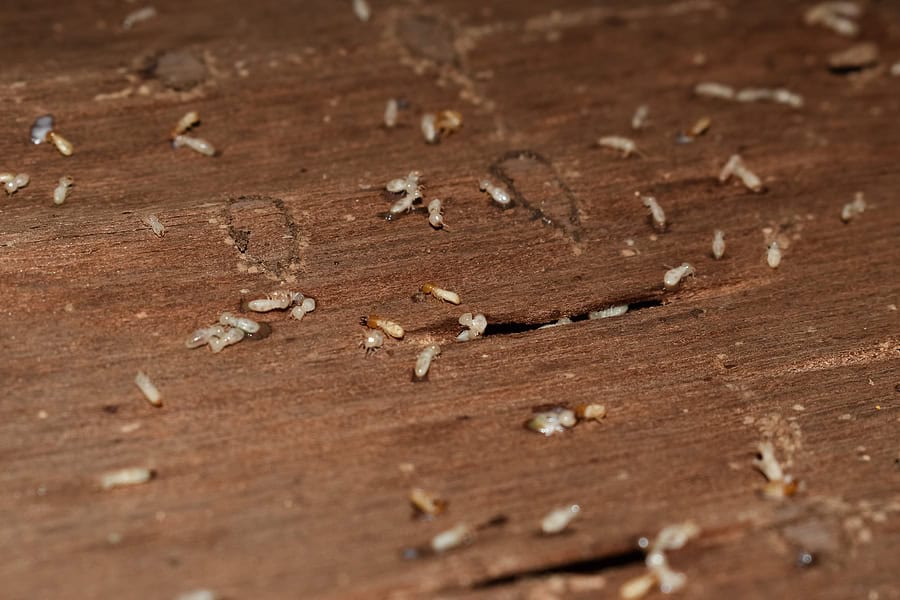
Jun 13, 2024 | DIY Pest Control, Florida Termite Control
Termites thrive in warmer weather and are known to create extensive damage to your home if not managed properly. This makes Florida’s warm and humid climate a hotspot for termite activity! In our sunshine state, the most common types of termites are drywood and subterranean termites. Let’s breakdown the difference between these two termite species and how you can prevent these pests from infesting your home.
Drywood and Subterranean Termites
It’s important to understand the difference between drywood termites and subterranean termites to properly treat and prevent them.
Drywood Termites
- Drywood termites live inside dry wood and do not need contact with soil.
- A good indication on whether drywood termites have infested is finding small piles of wood pellets or frass, tiny holes in wood surfaces, and discarded wings near windowsills or light fixtures.
- Drywood termites cause significant structural damage by hollowing out wood from the inside out.
Subterranean Termites
- Subterranean termites build colonies in the soil and require moisture to do so. They will often create mud tubes to travel between their nest and food sources.
- Signs of a subterranean termite infestation include mud tubes on exterior walls, foundations, or crawlspaces. Other infestation signs include damaged wood that sounds hollow and swarms of winged termites.
- These termites will destroy foundations, support beams, and other wooden structural causing thousands of dollars in repairs.
Termite Prevention Tips
There are several do-it-yourself prevention tips that you can utilize to prevent both drywood and subterranean termites. Consider the following:
- Seal any cracks and crevices in your home’s exterior using caulk or steel wool depending on the size.
- Keep attics, basements, and crawlspaces well-ventilated and dry; consider encapsulating your crawlspace to help with excess moisture.
- Fix leaky faucets, pipes, and air conditioning units to prevent standing water.
- Make sure your home’s drainage system directs water away from the foundation.
- Keep firewood, lumber, and other wooden materials elevated and away from your home’s foundation.
- Keep shrubs, trees, and other vegetation trimmed away from your home.
- Schedule an annual termite inspection with a professional Pompano pest control company near you. These professionals will provide you with a thorough inspection and termite control options if termites are found.
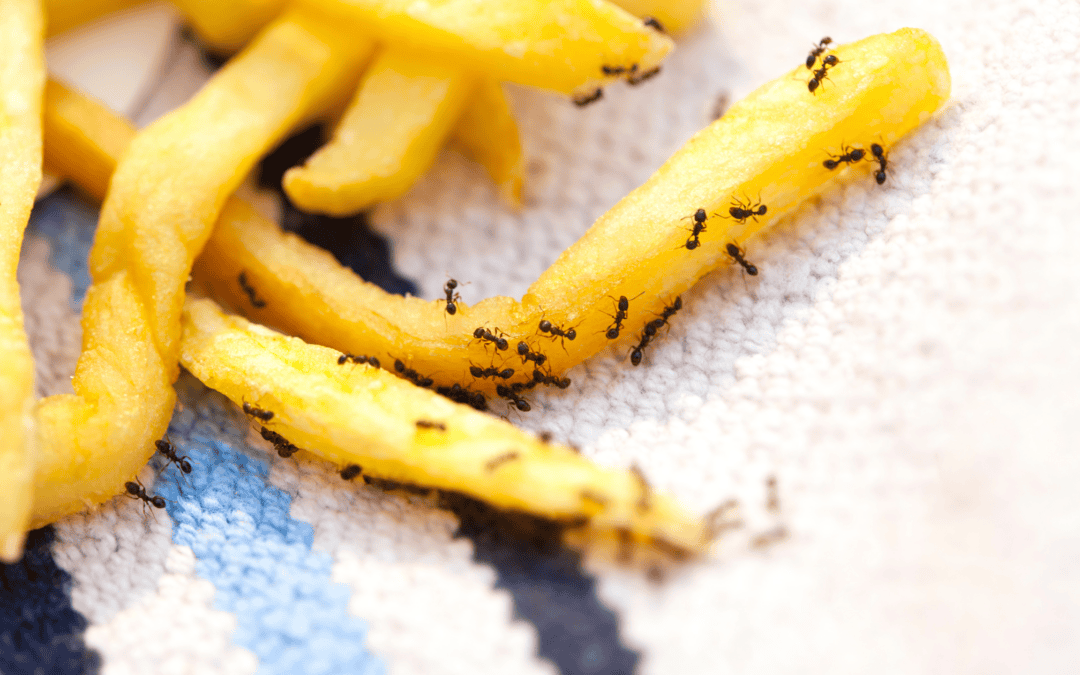
Jun 7, 2024 | DIY Pest Control, Pest Control
Summer is synonymous with warmth, outdoor fun, and unfortunately, pests. In Georgia, the hot and humid climate creates the perfect breeding ground for a variety of pests that can invade your home and yard. Understanding why summer is the peak season for pests, identifying common summer pests, and learning effective prevention tips are essential for maintaining a pest-free home. Here’s a comprehensive guide to help you manage and prevent summer pests.
Common Summer Pests in Georgia
Mosquitoes
- Why They Thrive: Mosquitoes thrive in warm temperatures and are especially drawn to standing water.
- Prevention Tips: Remove standing water from your yard, use mosquito repellent, and install screens on windows and doors. Consider professional pest control services to treat your yard.
Ants
- Why They Thrive: Ants are in search of food and water, and summer provides ample opportunities.
- Prevention Tips: Keep your kitchen clean, seal food in airtight containers, and fix any leaks. Regularly inspect and seal cracks and crevices around your home.
Termites
- Why They Thrive: Warm temperatures and increased humidity create ideal conditions for termites to thrive.
- Prevention Tips: Reduce moisture around your home’s foundation, store firewood away from the house, and schedule regular inspections with a pest control company to catch infestations early.
Roaches
- Why They Thrive: Roaches are attracted to food, water, and shelter, all of which are abundant in summer.
- Prevention Tips: Keep your home clean, fix leaks, and seal entry points. Professional pest control services can provide targeted treatments to eliminate roach infestations.
Ticks and Fleas
- Why They Thrive: Pets and wildlife bring these pests into yards, where they can quickly multiply in the warm weather.
- Prevention Tips: Regularly treat pets with flea and tick preventatives, keep your yard well-maintained, and consider professional treatments to protect your outdoor spaces.
Common Summer Pest Control Tips for Homeowners
Maintain Your Yard
- Keep your lawn mowed and your landscaping neat. Overgrown grass and bushes provide perfect hiding spots for pests.
- Remove any debris, such as fallen leaves or branches, which can harbor pests.
- Ensure that any firewood is stored away from the house and elevated off the ground.
Seal Entry Points
- Inspect your home for cracks and gaps around windows, doors, and foundations. Sealing these entry points can prevent pests from getting inside.
- Use weather stripping on doors and repair any damaged window screens.
Proper Food Storage
- Store food in airtight containers and clean up crumbs and spills immediately.
- Take out the trash regularly and use trash cans with tight-fitting lids.
Manage Moisture
- Fix any leaks and address areas with poor drainage around your home.
- Use dehumidifiers in damp areas like basements and attics to reduce moisture levels.
Regular Cleaning
- Regularly vacuum carpets and clean upholstery to remove crumbs and potential pest habitats.
- Pay special attention to the kitchen and bathroom, as these areas are most attractive to pests.
Professional Pest Control Services
Despite your best efforts, some pest problems require the expertise of a professional pest control company. In Georgia, where the pest population can be particularly persistent, regular pest management can make a significant difference. Here are some benefits of professional pest control services:
- Targeted Treatments: Professionals can identify the specific pests invading your home and apply targeted treatments to eliminate them effectively.
- Preventative Measures: Regular pest control services can help prevent infestations before they become severe.
- Expert Knowledge: Pest control experts have the training and knowledge to handle various pests safely and effectively.
When searching for “pest control services near me,” look for a reputable company with positive reviews and proven results. A good pest control company will offer customized plans to suit your specific needs, ensuring your home remains pest-free throughout the summer and beyond.
Summer in Georgia brings with it an array of pests that can disrupt your home and outdoor activities. By understanding the common summer pests and taking proactive measures to prevent them, you can enjoy a pest-free summer. And remember, professional pest control services are always a reliable option to keep your home safe from unwanted invaders.
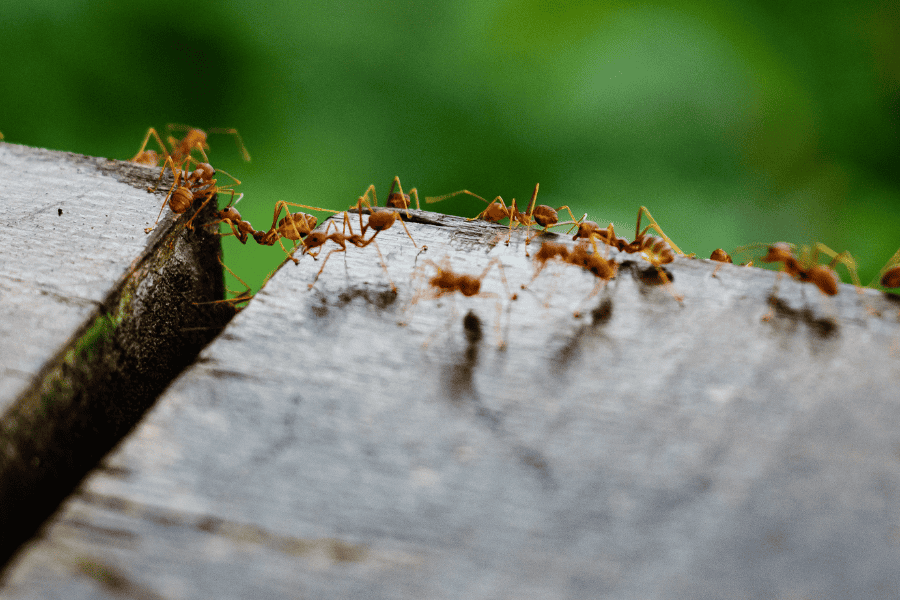
Jun 6, 2024 | DIY Pest Control, Fire Ant, Florida Pest Control
While fire ants are small, they can pack a painful sting! These pests can quickly take over your yard with their unsightly mounds and if threatened they can become aggressive with their painful sting. Let’s review everything you need to know about preventing fire ants and ways you can deter them from your yard.
Understanding Fire Ants
Fire ants are reddish-brown with a dark abdomen. These ants can vary in size from 1/8 to 1/4 inch. Fire ants will often build their large, dome-shaped mounds in yards. These mounds can reach up to 18 inches in height. They will often build in areas that are open and sunny, such as lawns, pastures, and along roads. Fire ants are known to sting if provoked, causing allergic reactions to some. Fire ants will often enter our homes for a food source, such as fruits, insects, and oils from seeds.
Preventing Fire Ants from Your Yard
An effective method to prevent fire ants is placing some easy preventative measures throughout your property to deter them in the first place. Consider the following DIY fire ant prevention tips:
- Seal cracks and crevices to keep them out of your home
- Keep your yard well-maintained by regularly mowing the lawn, trimming bushes, and removing debris.
- Avoid over-watering your lawn, as fire ants are attracted to moist environments.
- If you’re eating food outdoors, make sure to clean up any food crumbs or drink spills.
- If you have fruit trees in your yard, make sure to remove any rotten fruit or fruit that has fallen on the ground.
- Repair any leaking faucets, hoses, or irrigation systems in your yard.
If you’ve spotted a fire ant mound in your yard or would like to start preventing them now, the best thing to do is call a professional pest control company near you for help. These experts will provide you with a thorough inspection, treatment plan to remove these pests, and recommendations on how you can prevent them from returning.
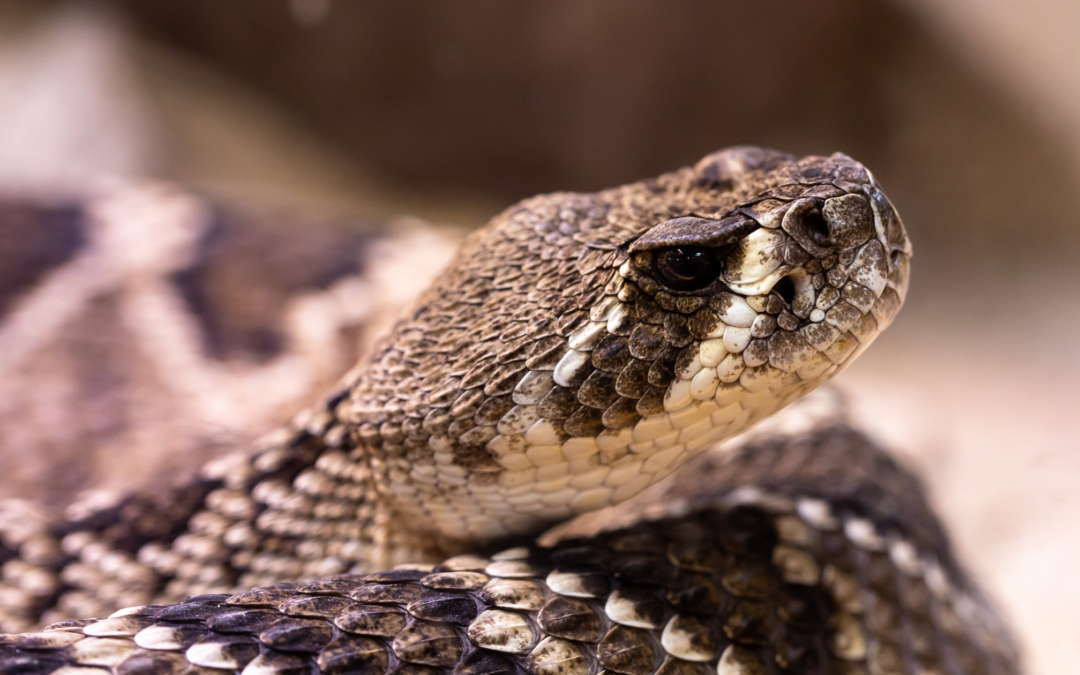
May 31, 2024 | DIY Wildlife Prevention, Wildlife
Living in the beautiful state of Georgia comes with its fair share of wildlife encounters, and one of the most feared encounters for many homeowners is stumbling upon a venomous snake. With over 40 species of snakes slithering through the Georgia landscape, it’s essential to know how to distinguish between harmless serpents and those that pose a threat. In this guide, we’ll explore common venomous snakes in Georgia, their identifying features, where they can be found, associated risks, and what to do if you encounter one. Additionally, we’ll provide tips on how to deter venomous snakes from entering your yard, ensuring a safer environment for you and your family.
Common Venomous Snakes in Georgia
- Eastern Diamondback Rattlesnake (Crotalus adamanteus)
- Identifying Features: Known for its distinctive diamond-shaped patterns along its back, this snake’s coloration ranges from gray to brown with dark brown or black diamonds outlined in white.
- Habitat: Eastern Diamondback Rattlesnakes prefer pine forests, coastal scrub habitats, and sandy areas.
- Risks: Their potent venom can be fatal if not treated promptly. They are known to be aggressive when threatened.
- Copperhead (Agkistrodon contortrix)
- Identifying Features: Copperheads have copper-colored heads and hourglass-shaped patterns along their bodies. They often blend well with their surroundings.
- Habitat: Copperheads are commonly found in wooded areas, rocky hillsides, and suburban neighborhoods.
- Risks: While their venom is less potent than other venomous snakes, a bite can still result in severe pain, swelling, and tissue damage.
- Eastern Coral Snake (Micrurus fulvius)
- Identifying Features: Recognizable by their brightly colored bands of red, yellow, and black, coral snakes have a distinct pattern: red touches yellow, kill a fellow; red touches black, venom lack.
- Habitat: They inhabit pine flatwoods, hardwood forests, and coastal plains.
- Risks: Coral snakes possess potent neurotoxic venom, although they are not aggressive and rarely bite humans.
What to Do If You Encounter a Venomous Snake
If you come across a venomous snake on your property or while out in nature, it’s crucial to remain calm and follow these steps:
- Give the Snake Space: Back away slowly to give the snake an escape route. Most snake bites occur when people try to handle or kill the snake.
- Do Not Provoke or Agitate: Venomous snakes will typically only strike if they feel threatened. Avoid sudden movements or loud noises that may startle the snake.
- Seek Medical Attention: If you or someone else is bitten by a venomous snake, seek medical attention immediately. Do not attempt to treat the bite yourself.
- Note the Snake’s Appearance: If it’s safe to do so, try to remember the snake’s color, pattern, and size. This information can help medical professionals determine the appropriate treatment.
Deterring Venomous Snakes from Your Yard
Prevention is key when it comes to keeping venomous snakes away from your property. Here are some tips to deter them:
- Keep Your Yard Tidy: Remove clutter, such as piles of wood, debris, and tall grass, where snakes may hide.
- Seal Entry Points: Seal any gaps or holes in your home’s foundation, walls, and around doors and windows to prevent snakes from entering.
- Trim Vegetation: Keep shrubs, bushes, and grass trimmed short to reduce hiding spots for snakes.
- Use Snake Repellents: Consider using snake repellents or natural deterrents like mothballs or essential oils around the perimeter of your property.
- Consult a Wildlife Control Company: If you have a persistent snake problem, consider hiring a professional wildlife control company. They can safely remove snakes from your property and implement preventive measures to keep them from returning.
By familiarizing yourself with the common venomous snakes in Georgia and taking proactive measures to deter them from your property, you can minimize the risk of encountering these potentially dangerous reptiles. Remember, when it comes to venomous snakes, caution and prevention are your best defenses.
If you encounter a venomous snake on your property and need assistance with snake relocation or wildlife control, don’t hesitate to contact a reputable wildlife control company in your area. Stay safe and informed, and enjoy the beauty of Georgia’s wildlife responsibly.
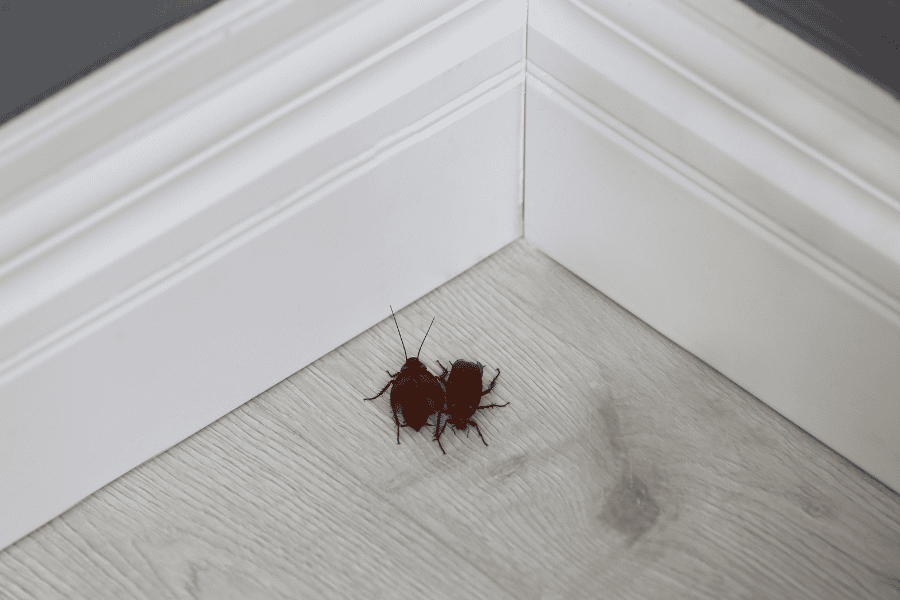
May 28, 2024 | DIY Pest Control, Florida Pest Control
Living in Florida, we have to deal with our fair share of bugs invading our home throughout the year. Whether mosquitoes are invading your yard, ants are taking over your kitchen, or rats are raiding your trash cans, household pests can surely become a major issue. Unfortunately, humans can have a lot to do with pest infestations by our habits, often leading bugs right into our home. We break down the common reasons you could have a bug problem into your Florida home.
What Leads To Bug Problems In Your Home
Trash
Our leftover trash is dinnertime for pests! Pests, such as rats and ants, are all looking for a food source for survival and will often look to our trash cans for available food, creating a huge mess in the process. It’s important to secure your outside and inside trashcan with a tightly sealed lid and ensure your trash bags are sealed without rips or tears.
Excessive Moisture
Several pests prefer a damp environment and need water to survive too. Unfortunately, we also need water, and certain factors throughout our homes can provide pests with a water source, often leading to a bug problem. A leaky faucet can attract pests, like mice, who will return to areas if they have access to water or food. Make sure to check throughout your home for any leaky pipes, faucets, or AC units and repair them as soon as possible. Likewise, your basement and crawlspace can often create excess moisture that can lead to fungus, bad air quality, and pest infestations. Utilize a dehumidifier to dry any wet areas and consider crawlspace enclosure to ensure no moisture is found.
Unnecessary Clutter
Clutter, such as old newspapers, magazines, and cardboard boxes can provide several pests with the perfect environment. Decluttering and cleaning items out to eliminate hiding places will help prevent pests overall. Consider utilizing plastic storage containers with lids to store any items and elevating them off the ground. Additionally, avoid having clothes piled on the floor, as bugs like spiders are known to hide out in them.
Dirty Kitchen
Dirty dishes, food crumbs, and drink spills can attract pests like flies, ants, roaches, and more right into your home! After each meal, wash and put away your dishes to avoid these pests. Likewise, clean up any leftover spills and food crumbs off your floors, dining room table, and counter tops. Don’t forget to clean behind and under your kitchen appliances too as pests like to hide behind stoves and refrigerators to find a food source.
If you’ve noticed an increase of bugs throughout your Florida home, it’s best to call a pest control company near you. These professionals will provide you with a comprehensive pest control and prevention plan.
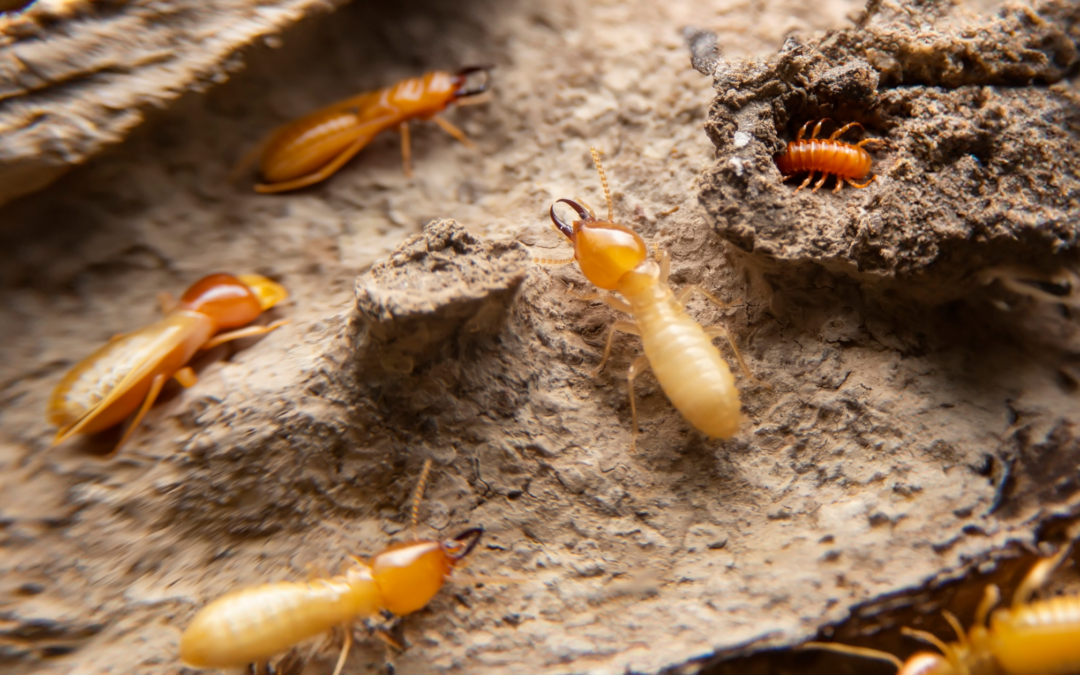
May 24, 2024 | DIY Pest Control, Termite Control








